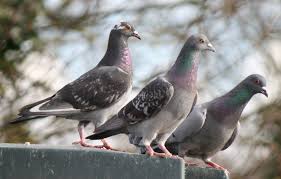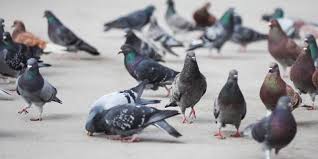Pest Management Solutions for Your Business
Fall is a crucial time for bird management in commercial facilities since most species of protected migratory birds head south for warmer climates and abandon their nesting sites.
Bird management work in and around commercial facilities, especially food processing and packaging facilities, has taken on added importance considering the Food Safety Modernization Act (FSMA).
A single bird that finds its way into a food plant can trigger a host of concerns such as, failed audits, product contamination, plant closure, production stoppage, lost revenues, fines, structural damage, health hazards to occupants and fire hazards.
Tighter enforcement of audit standards by third-party and government auditors – especially during the pandemic – has commercial facility and QA managers paying much closer attention to their bird management protocols.
Inspectors no longer need evidence of actual bird contamination to assess a penalty. Instead, they just need a reason to believe that “contamination could reasonably occur.” Birds roosting uninhibited near a field or storage facility, or unsecured doorways could result in a penalty.
“Bird control was often overlooked by inspectors and auditors, but FSMA places more emphasis on the safe stewarding of food and packaging materials from farm to table and making sure birds do not pose a threat to your facility and its contents,” said Keith Rowney, Sprague Pest Solutions’ certified bird control specialist.
A ProActive Approach is Key
Food processing and packaging facilities must be pro-active in their efforts to prevent nuisance birds from threatening the facility and its products.
The most obvious hazard is from droppings landing directly on food, preparation equipment, shipping materials, or other supplies that come in contact with your product. The indirect hazards are more difficult to detect but are equally dangerous.
Droppings might enter your facility on the bottom of an employee’s shoe or dried, dusty droppings from the roof might enter your facility via HVAC ducts or other vented pathways. To avoid being fined or even shut down, you must carefully and thoroughly evaluate all your risks.
What steps can QA and facility managers take to evaluate their facilities risk when it comes to birds?
- Look beyond the four walls of your facility for bird issues. Exposed stacks of shipping pallets outside a structure with droppings on them could cause you to fail an audit.
- Any bird sightings on fixtures or equipment – inside or outside – could be a cause for concern with auditors as can the presence of fecal matter, feathers or nesting materials.
- Have a bird management needs assessment for your facility, develop an action plan to correct any issues and reevaluate the work that is done for effectiveness.
Birds are unique problem in commercial facilities because they can easily navigate between facilities that are miles apart and deliver pathogens (in their droppings) that contain harmful bacteria including listeria, E. coli and salmonella that can be brought inside a facility on the sole of an employee’s shoe or land on food ingredients or preparation areas if the birds gain access inside.
Consequences for employees of food processing facilities that are found at fault for allowing food borne disease to taint products and threaten food safety have never been higher.
Discover The Sprague Difference
Looking for proven bird management solutions from an innovative pest management partner? Connect with the rodent management experts at 800.272.4988.

